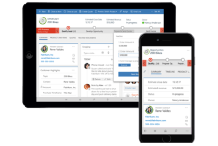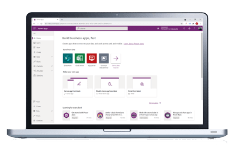The status date is a powerful field in MS Project. Understanding exactly what it does will aid in the progression of project work. I found this article from Microsoft about the Status date field and while this article was initially written for Project 2003, it is still very relevant to the versions that we use today.
The status date is the same as the current date (today's date) unless you specify a different status date. You can also use the status date to determine where to place actual and remaining work in the schedule when entering progress information.
- Changing the status date
By default, the status date is the current date. If you view your project's status by using progress lines, you see the project's status as of the current date. Likewise, if you enter progress information, the actuals and remaining work are scheduled around the current date. Earned value information is also calculated for the current date.
You can change the status date to enter or view progress information as of a date other than the current date. For example, you might want to change the status date to see what the project's status was as of last week. Or, if progress reports are due Friday but were sent in late, you might set the status date to Friday before entering progress information. To change the status date, on the Project menu, click Project Information. In the Status date box, enter the status date you want to use.
Note If you update the project with actuals from a Microsoft Office Project Web Access 2003 timesheet or some other source, you might want to set the status date to the last date of the timesheet period.
- How the status date affects progress updates
When you enter progress as percent complete or actual work to date, Project uses the current date or the status date, if different, to determine where to place actual work and where to schedule remaining work. You can modify the default settings for how the status date is used for placing actual work and remaining work where you want, particularly when assignments are completed earlier or later than scheduled.
Two check boxes on the Calculation tab of the Options dialog box (Tools menu) affect how Project schedules actuals and remaining duration. If you change these settings, Project does not move the actual or remaining work at all; work remains where it was originally scheduled, even if you report that the work was completed several weeks earlier than scheduled.
In addition to the two main status date settings, you can select two other settings on the Calculation tab to further change the way Project schedules based on the status date.
First, consider tasks that are scheduled after the status date, and have actuals entered against them. If the Move end of completed parts after status date back to status date check box is selected, then if a task is scheduled after the status date and you enter actuals against it, Project moves the actual, completed portion of the task so that the completed work ends on the status date, and any remaining work remains scheduled to begin in the future. Therefore, if the status date is set to today, and you enter actuals, the work is assumed to finish today, not in the future. But the remaining work is not expected to start until the future:
If the Move start of remaining parts before status data forward to status date check box is selected, you can also select the And move start of remaining parts back to status date check box. With both check boxes selected, Project moves the entire task around the status date, to show that work was done on the task and completed as of the status date and remaining work is continuing as of the status date:
Next, consider tasks that are scheduled before the status date and that have actuals entered against them. If the Move start of remaining parts before status data forward to status date check box is selected, then if a task is scheduled before the status date and you enter actuals against it, Project leaves the actual portion of the task as scheduled, but moves any remaining work to the status date. Therefore, if the status date is set to today and you enter actuals, the work is assumed to have been completed when it was scheduled, but it is assumed that the remaining work will begin immediately instead of in the past (before the status date):
If the Move start of remaining parts before status date forward to status date check box is selected, you can also select the And move end of completed parts forward to status date check box. With both check boxes selected, Project moves the entire task around the status date, to show that work was done on the task and completed as of the status date and that remaining work is continuing as of the status date:
These controls are particularly useful when you want to see "ahead of schedule" progress lines. They're also useful for changing how earned value is accrued.
Note that these settings do not control the placement of actual and remaining work when you track progress by entering actual work by time period.
- How the status date affects earned value
Certain earned value costs are calculated as of the status date. For example, the budgeted cost of work scheduled (BCWS) is the portion of the cost th















